Kite Surfing: A Comprehensive Guide to the Sport
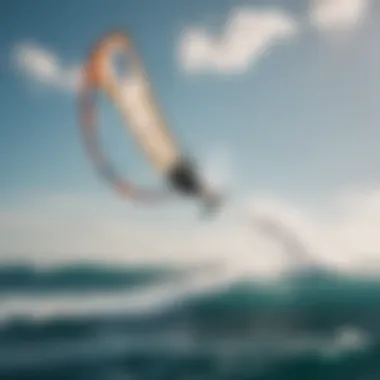
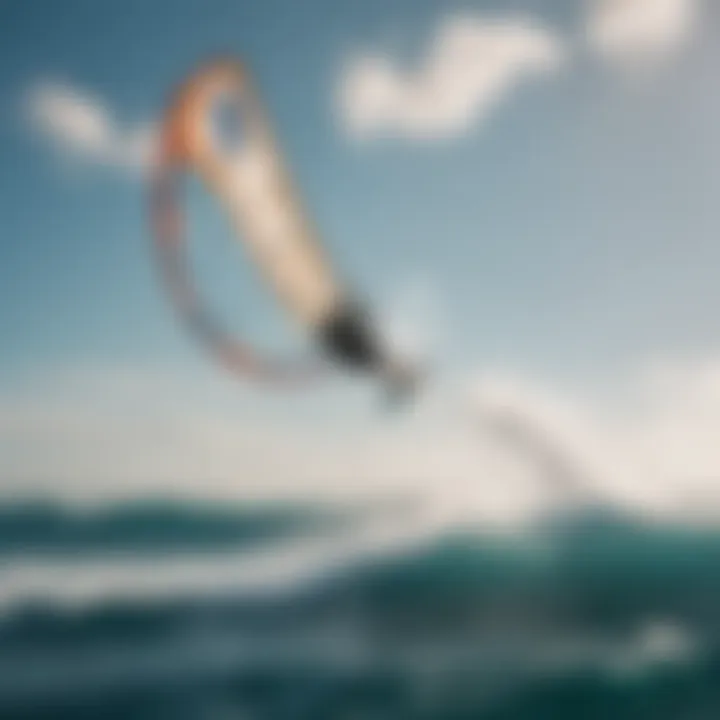
Intro
Kite surfing captivates those who seek a fusion of thrill, balance, and natural elements. Unlike traditional surfing, kite surfing combines surfing with wind power, opening doors to vast, untamed waters. Whether skimming across waves, jumping high in the air, or gliding gracefully, each kitesurfer dances with the wind. Such a sport draws enthusiasts from all walks of life – from surfers seeking new challenges to adventurers who crave the feeling of wind against their skin.
Understanding kite surfing involves grasping its nuances. Let’s delve deeper into the essential techniques, skills, safety measures, and gear needed in this sport that has taken the world by storm.
Techniques and Skills
Fundamental Techniques for Beginners
For newcomers, kite surfing may appear daunting. However, mastering basic techniques can transform fear into exhilaration. A few key points form the bedrock for beginners:
- Kite Control: Understanding how to pilot the kite is crucial. Start on land with a trainer kite. Learn to manage its position and power by practicing sweet loops and gentle drops.
- Body Dragging: Before catching waves, practice body dragging. This involves using the kite to pull you through water without a board. It's an excellent opportunity to gain familiarity with kite responsiveness and water dynamics as you learn to stay afloat.
- Water Starts: This key skill bridges the gap between dragging and riding. Position the board under your feet while the kite pulls you upright. Remember, patience is key here; every attempt hones your skills.
Advanced Skills for Experienced Athletes
Once foundation skills are mastered, kite surfers often seek to elevate their game. Here are some advanced techniques:
- Jumping and Tricks: Mastering jumps adds a new layer of excitement. Key components include pop, sheet, and steer. It takes practice, yet the reward of soaring above the water is worth every effort.
- Transitions: Executing transitions allows for seamless direction changes. Focusing on foot placements and kite control is crucial, especially in managing your speed while turning.
- Waves Riding: For those who crave the sensation of waves, kitesurfing over waves demands awareness of surf conditions and timings. Reading the ocean mindfully will enable you to harness wave energy for exhilarating rides.
"The kitesurfer's journey is about harnessing the elements, understanding the ocean, and navigating both wind and waves with grace."
Safety and Gear
Essential Safety Measures in Watersports
Safety should never take a back seat when kite surfing. Awareness and preparation safeguard both beginners and seasoned athletes. A few fundamental safety measures include:
- Proper Training: Invest time in taking lessons or courses. Knowledge from professionals ensures safety and proficiency.
- Wear a Personal Flotation Device (PFD): These devices offer peace of mind although not mandated. A PFD is a crucial piece of gear in case of unexpected incidents.
- Know Your Environment: Too much wind or crowded areas can lead to mishaps. Be mindful of conditions, and choose appropriate locations away from large crowds.
Gear Reviews and Recommendations
When it comes to gear, quality matters. Get familiar with the essential components:
- Kite: Choosing the right kite depends on wind conditions, your skills, and preferences. Brands like Cabrinha and Naish are well-regarded for performance and durability.
- Board: Smaller boards work well for speed while larger ones aid in stability. Options like the Slingshot and F-One boards cater to varying skill levels and styles.
- Harness: A good harness should provide comfort and support. Waist or seat harnesses differ in fit and function, so testing both types is advisable.
By understanding both techniques and safety, kite surfers can appreciate their time on the water. From the thrill of each new jump to the sensation of cutting through waves, kite surfing offers an escape and a challenge unique to this adrenaline-fueled sport.
For continuing insights on kite surfing, check resources like Wikipedia, Britannica, or relevant discussions on Reddit and Facebook.
Understanding Kite Surfing
Kite surfing, often seen as a thrilling blend of various elements such as surfing, wind sports, and adventure, holds a special place in the hearts of outdoor enthusiasts. Understanding kite surfing is not just about grasping the mechanics of the sport; it's about appreciating the synergy between the wind, water, and the rider. This sport takes individual skill and the right equipment to experience the unique sensation of gliding across water while harnessing the power of the wind.
There's something captivating about watching a kite surfer dance on the water's surface, weaving in and out of waves, propelled by sheer will and wind. For beginners, the world of kite surfing may seem daunting with its technical skills and safety requirements, yet once a person dives in, the reward is incomparable. Engaging in kite surfing opens doors to a vibrant community, diverse locations, and the thrill of adventure, making it essential to understand various aspects of the sport before diving into the exhilarating waters ahead.
Defining the Sport
Kite surfing, often referred to as kiteboarding in some regions, is fundamentally a water sport that combines aspects of surfing, wakeboarding, and paragliding. At its core, it utilizes a large controllable kite to harness wind power. Surfers stand on a board while the kite pulls them across the water. This unique sport demands not just physical prowess but also a keen understanding of wind direction, water currents, and kite control. The thrill lies in mastering these variables to perform jumps, tricks, and smooth rides. Understanding these foundational elements prepares enthusiasts for the challenges and joys of the sport.
Origins and Evolution
The roots of kite surfing can be traced back to ancient practices, but it wasn't until the late 20th century that it transformed into the modern sport we recognize today.
Early Innovations
The initial burst of innovation in kite surfing came when enthusiasts began experimenting with kites designed for land and water use. In the 1970s and 1980s, inventors like Gijsbertus Adrianus Panhuise and later, the legendary foil kite design, set the stage for the development of kite surfing. These innovative designs introduced the first practical applications of kite power on water, creating a whole new genre of sports. The evolution of kite styles has made them more reliable and user-friendly, which are critical features for both beginners and experienced riders alike.
Key Milestones
Throughout the years, various key milestones have marked the journey of kite surfing. The release of the first inflatable kite in the late 1990s played a pivotal role in the sport's evolution, allowing for easier handling and more stability in the air. Events such as the first world championship in 2000 pushed the sport into the spotlight, showcasing the breathtaking skills and athleticism kite surfers possess. These milestones reflect kite surfing’s growth from a niche activity into a global phenomenon.
Influential Figures
Certain individuals have significantly shaped the kite surfing landscape. Prominent figures like Robby Naish and Jessie Richman have contributed to the sport’s growth, introducing novel techniques and inspiring countless others to try kite surfing. These influencers not only showcased impressive performances in competitions but also played advocacy roles in promoting safety and environmental care within the community. Their impact has helped bridge gaps, fostering a spirit of camaraderie and competition that exists in kite surfing today.
The blend of individual skill and communal support available in kite surfing creates a unique culture that lasts beyond just the sport.
In sum, understanding kite surfing requires an appreciation of its defining moments, technical aspects, and the vibrant community behind it. Each element contributes to a richer experience and ensures that even newcomers feel welcomed into this exciting world.
Essential Kite Surfing Equipment
Kite surfing, as a thrilling sport, relies heavily on the right equipment to maximize both performance and safety. Having the appropriate gear is crucial, not only to enhance the surfing experience but also to reduce risks associated with this adrenaline-packed activity. A misstep in equipment choice can lead to injuries, loss of control, or simply an unsatisfactory time on the water. Hence, understanding the essential components classified in sections like kite types, boards, and safety gear will empower both novices and seasoned riders alike.
Kite Types and Features
Inflatable Kites
Inflatable kites are arguably the stalwart option in the kite surfing realm. They consist of chambers that can be inflated with air, ensuring they maintain their shape and provide ample lift. One of the standout characteristics of inflatable kites is their stability, which allows for smooth flying even in gusty conditions. These kites are often favored for their ease of use and versatility in different wind scenarios, making them a top choice for beginners and intermediates.
Their major advantage lies in their forgiving nature; when crashed, they simply float on the water, allowing the rider to easily re-launch them. However, they do require regular maintenance to check for leaks, which requires diligence and commitment from the rider.
C-Shape Kites
C-Shape kites are well-known for their responsiveness and performance in diverse conditions. With a distinct design that gives them a hook-like appearance, these kites offer unmatched power and speed. They are typically preferred by experienced riders who undertake freestyle maneuvers, jumps, or tricks.
A key characteristic is their low aspect ratio, which allows for tight turning, particularly advantageous in competitions where precision counts. However, their benefits come at a cost, as they might be trickier to handle for those just starting out and can sometimes be less stable in lighter winds.
Foil Kites
Foil kites are a newer breed in the kite surfing family, sharing some aspects with paragliders. They are made of ripstop nylon and lack inflatable chambers. Instead, they rely on the shape of the kite itself to maintain air pressure, which allows them to perform exceptionally well in lighter winds.
The unique feature of foil kites is their efficiency; they can glide effortlessly, making long-distance rides feasible. They are lightweight and can be rolled up for easy transport, which is a significant plus for traveling surfers. On the flip side, they can be a bit more complex to control, especially during gusty conditions, making them less ideal for novices.
Boards Overview
Directional Boards
Directional boards are tailored for riders looking to carve large arcs in the water, mimicking a traditional surfing style. Their design is similar to surfboards, complete with fins that enhance control while riding the waves.
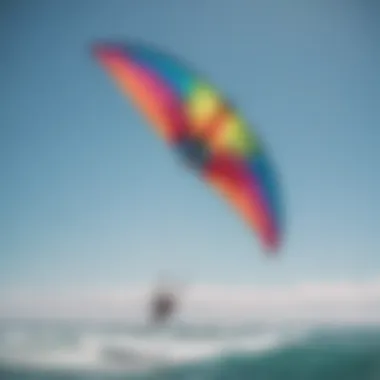
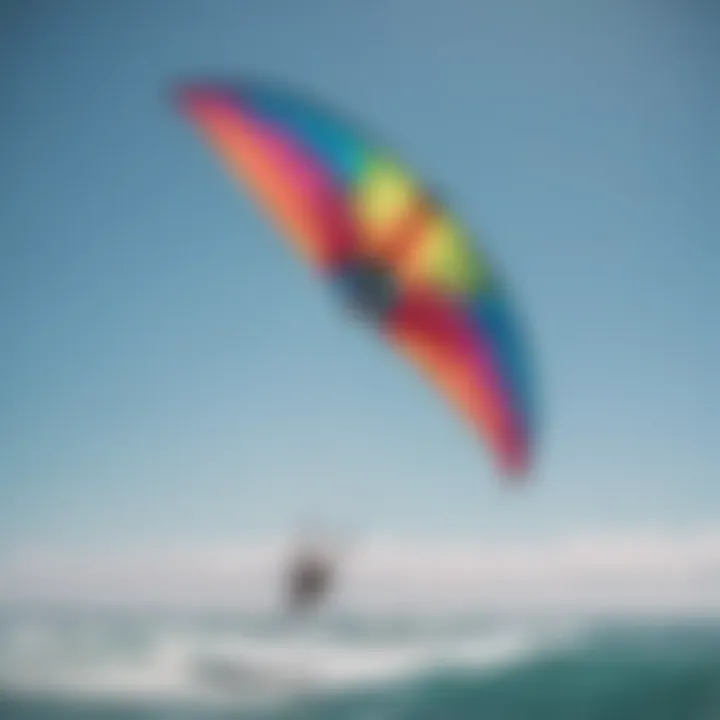
The major advantage of directional boards is their efficiency in larger surf, allowing experienced kite surfers to perform elegantly on the water. However, the downside is their limited ability to ride backward or perform tricks like twintip boards.
Twintip Boards
Twintip boards have become increasingly popular due to their versatility. They feature a symmetrical shape, enabling riders to ride in either direction effortlessly. This characteristic makes them a favorite among beginners and those interested in freestyle tricks, as they allow for easy transitions and jumps.
Their design also promotes a more user-friendly experience when learning water starts. Yet, they might not perform as well as directional boards in larger surf due to their reduced planning capabilities.
Foil Boards
Foil boards are perhaps the most advanced in the board selection for kite surfing. They feature a hydrofoil attachment that enables the board to lift above the water's surface, creating a unique sensation akin to flying. This can be particularly thrilling, although it requires a specific technique to master.
The unique advantage of foil boards is the ability to ride in shallower water and in lighter winds due to their design. However, they can have a steep learning curve and might not be suited for all beginners, especially those still grappling with the basics of control and balance on the water.
Safety Gear Necessities
Helmets
While helmets may seem like an afterthought, their significance in kite surfing cannot be overstated. They serve as a protective barrier against impacts, especially during falls or when navigating crowded waters. A good helmet should comfortably fit and remain securely in place, allowing for an unobstructed field of vision.
Having a quality helmet is a small investment for huge peace of mind, potentially preventing serious injuries. However, it can sometimes cause discomfort in strong winds, which may distract novice riders.
Impact Vests
An impact vest is designed for buoyancy and impact protection. They provide additional support to the torso and reduce the chances of injury during hard landings after a jump.
While they enable more confidence when executing tricks, it is crucial to choose one that fits well and allows freedom of movement. Some riders find they may be a bit bulky, especially when getting wet, but their protective features far outweigh these minor inconveniences.
Leashes and Safety Releases
Leashes play a critical role in ensuring that the kite remains attached to the rider during rides and falls, preventing it from drifting away. Safety releases allow riders to detach from their kites in emergency situations, making them indispensable for safety protocols.
A quality leash should be strong and somewhat elastic, providing a balance between durability and flexibility. However, poorly designed leashes can tangle and complicate situations, showcasing the need for conscientious selections when purchasing these safety essentials.
Techniques in Kite Surfing
Techniques in kite surfing represent the heart and soul of the sport. The mastery of various maneuvers not only enhances the experience but also ensures the safety and enjoyment of each session. From beginners launching their kites for the first time to seasoned pros performing aerial tricks, understanding these techniques is essential. There’s a world of difference between just riding the waves and truly becoming one with the wind and water. Each technique contributes to overall skill development, allowing riders to adapt to varying conditions and elevate their performance.
Basic Maneuvers
In this section, we delve into the fundamental techniques every kite surfer should know. Mastering these basics provides the foundation for more advanced skills.
Launching the Kite
Launching the kite is perhaps one of the most crucial steps in kite surfing. It sets the stage for everything that follows. Imagine standing on the shoreline, the wind teasing your kite with potential energy. The key characteristic of launching lies in timing—understanding when the breeze is perfect and how to position the kite correctly.
This technique’s popularity stems from the straightforwardness of getting started. With proper guidance, beginners can master launching within a few attempts. A unique feature of the launching process is the need for teamwork; having a reliable buddy can make a world of difference. An advantage of this approach is the safety net it provides. However, if not done correctly, misunderstandings during launching can lead to accidents, reminding us all of the importance of good communication.
Water Starts
Moving from land to water starts is a thrilling transition. The water start is fundamental for kite surfers as it determines how smoothly they enter the ride. It’s characterized by the need for balance and timing with the kite management.
Water starts are beneficial because they allow a beginner to experience the thrill of riding relatively quickly. This sense of accomplishment can keep motivation high. A unique aspect of this maneuver is the connection it fosters between the kite and the board, which is pivotal for stability. However, on less windy days, this technique can present challenges, requiring more effort and patience.
Riding Techniques
Once you're up and riding, the techniques you employ become critical. Riding techniques encompass everything from maintaining balance to managing speed. A key characteristic here is adaptability; every day and location presents different conditions that affect your ride.
Riding techniques are popular because they enable surfers to explore their surroundings creatively. They also provide a unique feature—control in the water. By mastering body positioning and understanding how the kite influences your trajectory, riders can enjoy longer sessions without fatigue. Nonetheless, neglecting these fundamentals can lead to falls or even injuries, emphasizing the importance of practice and awareness.
Advanced Techniques
Transitioning to the advanced techniques, kite surfing truly showcases its artistry. These maneuvers take practice, patience, and an understanding of dynamics on the water.
Jumping and Tricks
Jumping is synonymous with kite surfing excitement. It’s where you can push the envelope, showcasing skills that often leave spectators in awe. The essence of jumping lies in the blend of timing and kite control, allowing you to soar high above the water.
This technique stands out because it represents the ultimate thrill-seeking element of the sport. Notably, jumping can elevate your experience, turning every wave into a moment of joy. However, the downside is the steep learning curve, which might be intimidating for novices. Additionally, failing to land properly can lead to significant risks, so caution is essential.
Tack and Jibe
Tacking and jibing are about changing direction while maintaining speed—core competencies that can define a skilled kite surfer. This technique allows riders to navigate effectively, adapting to shifts in wind and water conditions.
The beauty of tacking and jibing is the fluidity they introduce. A masterful turn can feel euphoric, giving you a sense of control in turbulent conditions. While the ability to perform these maneuvers opens up new possibilities, the most challenging aspect is achieving a smooth transition. Practicing these skills can reduce the chances of mishaps, so perseverance is key.
Wave Riding
Wave riding is a coveted skill that draws kite surfers toward the ocean. Utilizing the swell to perform tricks and maintain speed offers both a challenge and an exciting ride. The characteristic highlight here is the dynamic interaction with the ocean’s natural waves.
This technique is often celebrated in the kite surfing community because it synergizes with the surroundings, creating a harmonious experience. The unique feature of wave riding is utilizing the wave’s energy, allowing for creative maneuvers as you ride down the face of the waves. However, conditions for successful wave riding may not be available everywhere and require a certain level of expertise to navigate safely.
"Kite surfing blends technique and nature in a dance that reflects both skill and the unpredictable beauty of the ocean."
Overall, understanding these crucial techniques enables kite surfers to experience the sport’s fullest potential, enhancing their skills and enjoyment in the exciting world of kite surfing.
Safety Considerations
Kite surfing is thrilling but it carries its risks. Knowing how to stay safe while riding those waves is essential. Understanding safety considerations can not only save your life but also enhance your enjoyment of the sport. It's not just about having fun; it’s about being smart and cautious. Here, we explore critical safety measures, starting with essential pre-ride assessments and emergency protocols that every kite surfer should know.
Pre-Ride Assessment
Before you even grab your kite, assessing your environment and personal readiness is crucial.
Wind Conditions
Wind conditions can make or break your kite surfing experience. The right amount of wind propels you across the water, while too much or too little can lead to dangerous situations. Typically, winds ranging from 12 to 25 knots are considered ideal for most beginners due to their balance of control and power. Knowing local weather patterns is a key characteristic; it helps you gauge if that day is good for hitting the waves.
Unique feature: Local microclimates exist, where the wind might be calm in one area and gusty just a few hundred meters away. Being informed about these peculiarities provides a significant advantage in navigating your kite surfing outings.
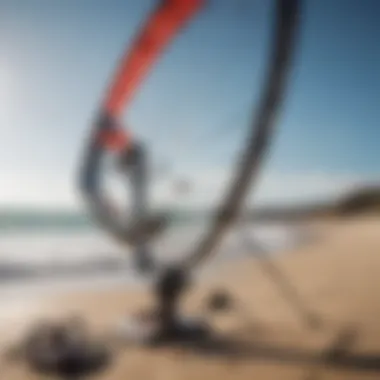
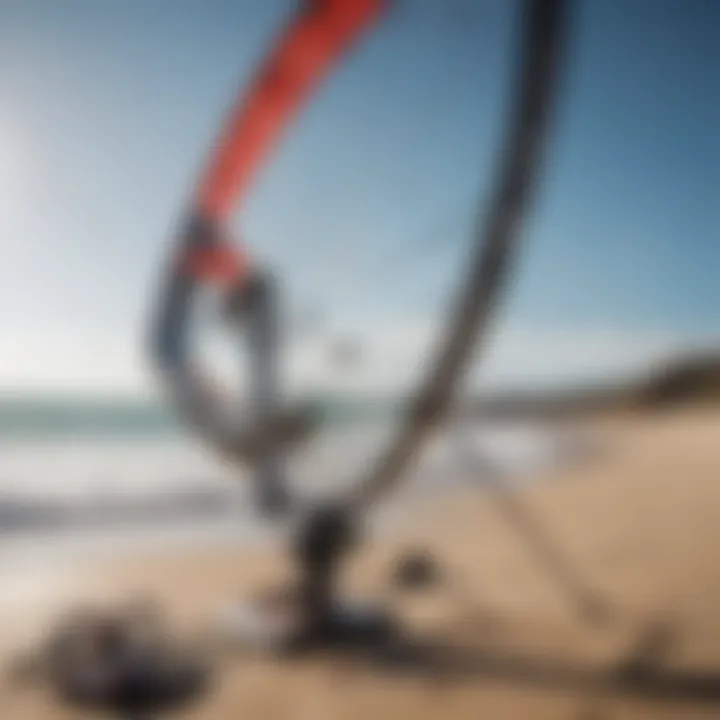
Water Hazards
Water hazards need to be front and center in your mind when kite surfing. From shallow reefs to unexpected underwater rocks, it's important to familiarize yourself with the spot before you dive in. The character of the site, like currents and tides, plays a big role too. Understanding these hazards can keep a romp in the surf from turning into a pint of trouble.
Advantages: Knowing what lies beneath the surface allows you to plan safer routes and avoid accidents while kite surfing. But, there's always the flip side; muddy or murky waters can hide dangers. So, be diligent in observing your surroundings.
Personal Skill Level
Your own personal skill level is another major consideration preceding any kite surfing venture. Do you have the necessary skills to handle the conditions? If the winds are strong and you have only just gotten the hang of water starts, you might find yourself in hot water. Evaluating your abilities can prevent accidents and enhance leisure.
Key characteristic: Everyone gets better with practice, but understanding your limits is vital. Targeting your growth helps you tackle harder challenges over time rather than biting off more than you can chew and risking injury.
Emergency Protocols
No one anticipates emergencies, but being prepared can make all the difference.
Dealing with Drowning
Knowing how to handle a drowning scenario is non-negotiable. Kite surfing often sees beginners struggling with water re-entry, which can cause panic. It’s crucial to have a specific plan in place. The key characteristic here is practicing self-rescue techniques.
Unique feature: The buddy system is a must; having another kite surfer nearby can provide significant support. If one person falls into trouble, the other is there to assist with safety or even a rescue.
Equipment Failures
Understanding what to do in case of equipment failures is essential. Whether it's a broken line, a malfunctioning kite, or a snapped harness, knowing how to deal with these breakdowns is vital.
Advantages: Familiarity with your gear translates to quick responses when things go awry. Simple fixes can often save what could otherwise be a dangerous situation.
Communication Signals
Establishing effective communication signals among your group is important. You may be far out on the water; shouting won’t cut it. Hand signals become your lifeline, telling others you’re in trouble, or simply need to come in.
Key characteristic: Creating an easy understanding before you hit the water means one less thing to worry about when catastrophe strikes. This ensures everyone can respond appropriately and swiftly.
"It’s better to have a safety net in place and never need it than to need it and have no plan in mind."
Taking the time for these safety considerations doesn’t merely enhance your experience; it ensures you have the knowledge required to make informed choices while kite surfing. So, prior to launching into the air, invest that extra moment for thorough assessments and familiarization – it could be the difference between a thrilling day on the water and an emergency rescue.
Kite Surfing Locations
Kite surfing locations are vital to the sport, offering not just a playground but also the necessary conditions for a thrilling experience. Whether you're a newbie hopping on a board for the first time or a seasoned pro chasing the next big wave, finding the right spot can make all the difference. Key considerations like wind intensity, wave conditions, and safety proximity come into play when selecting locations for kite surfing. Each type of location contributes uniquely to the sport's culture and development, enriching not only the experience of kitesurfers but also the overall community around it.
Popular Destinations
Coastal Regions
Coastal regions are the bread and butter of kite surfing, widely recognized for their consistent wind and open water. Places like the beaches of Tarifa in Spain or the North Shore of Maui in Hawaii draw countless enthusiasts annually. One of the key characteristics of coastal regions is the large expanse of water available, allowing for an uninterrupted cruising experience. This openness is a huge advantage, enabling kite surfers to ride longer and tackle bigger waves, enhancing skill development.
However, it's not all sunshine and waves. Crowded beaches can become a hindrance during peak seasons, and navigating through fellow surfers might be a challenge. Despite this, the picturesque surroundings often compensate for the congested conditions, making coastal regions a perennial favorite among kite surfers.
Lake Spots
In contrast, lake spots are regarded as hidden gems for kite surfers, often providing a different atmosphere. Locations such as the Great Lakes in North America or even specific spots in the Caribbean offer flat and shallow waters, which are excellent for beginners. The beauty of lake spots lies in their stability — with less wave action, they're perfect for refining skills and practicing maneuvers without the risk of wiping out on large waves.
Nevertheless, lake spots can be temperamental, with winds that may be less predictable than those found on the open ocean. For many, this unpredictability can be a double-edged sword; while boosts in skill are likely through adaptation, the waiting for the right wind can test one's patience.
Exotic Locations
Eager kite surfers often set their sights on exotic locations, where the thrill of adventure blends seamlessly with the joy of the sport. Spots like the pristine shores of Zanzibar or the lagoons of Mauritius offer unparalleled breathtaking views along with steady winds. The allure of exotic locales is largely attributed to their unique features such as vibrant ecosystems and a chance to kite surf in far-flung corners of the world.
However, while these destinations are undeniably dreamy, they can come with their own set of disadvantages: travel expenses, time zones, and potential language barriers can make things tricky. Yet, for many, the chance to ride in splendid, untouched waters makes every challenge worthwhile.
Choosing the Right Spot
Selecting the right kite surfing spot requires careful consideration about several elements that can amplify or dampen one's experience on the water. Among factors triggering this choice, analyzing wind patterns stands out as a primary task for a kitesurfing adventure.
Analyzing Wind Patterns
Wind patterns can vary immensely from one location to another, and understanding these patterns is essential for a successful session. Coastal areas typically enjoy steady wind conditions, while lakes may present challenges with less predictable breezes. A key characteristic of analyzing wind patterns involves understanding local weather climates and seasonal shifts.
This knowledge is beneficial for kite surfers, as it aids in planning trips around conditions likely to produce optimum experience on the water. Unique features of reliable wind patterns include the capacity for longer rides and less downtime waiting for the wind to pick up, fostering an enjoyable atmosphere for enthusiasts.
Local Regulations
It's vital to understand local regulations governing kite surfing areas. Different locations might impose various rules and restrictions to ensure safety for all participants. Key characteristics of local regulations may include designated areas for kitesurfing, times when activities are permissible, and restrictions on equipment sizes.
Adhering to these regulations not only provides a safer kiting environment but also preserves relationships with local communities. The unique outlook on how regulations function can either improve or complicate the kitesurfing experience, impacting participation and enjoyment.
Access to Facilities
When choosing a kite surfing spot, access to facilities is another critical aspect. This includes the availability of launch areas, equipment rental shops, and accommodation options nearby. Locations with readily accessible facilities can lead to a more relaxed trip for kite surfers, especially those who may not have all their gear on hand.
On the flip side, limited access can turn into an inconvenience, making it harder for participants to fully enjoy the experience. Each specific characteristic of accessibility can either be an advantage by providing comfort or a disadvantage if amenities are lacking.
In essence, kite surfing locations are pivotal in shaping the overall experience for riders, influencing both skill development and the community’s growth. By understanding the various types of locations and their unique contributions to the sport, participants can make informed choices that enhance their kite surfing adventures.
By considering these factors, kite surfers can navigate their passion more adeptly, ensuring every session on the water not only meets but exceeds expectations.
The Kite Surfing Community
The kite surfing community stands as a core element in understanding the sport's culture and growth. Like a well-woven tapestry, this community pulls together people from all walks of life, sharing a passion for the exhilarating experience of harnessing the wind on water. Engaging with fellow enthusiasts fosters camaraderie while promoting skills, safety, and sharing knowledge – essential aspects that benefit newcomers and seasoned riders alike.
Events and Competitions
The different events and competitions in kite surfing not only showcase individual skills but also strengthen the community spirit. These gatherings present a platform for sharing techniques, insights, and friendships.
International Championships
International championships are a pinnacle of competition in the kite surfing world. They draw elite riders from across the globe, competing for titles that carry significant prestige. The unique feature of these events lies in their ability to bring various kite surfers together under one collective goal: to push their limits and elevate the sport itself. One of the characteristics that makes these championships so appealing is their wide variety of categories, including freestyle and wave riding. This allows participants to showcase their strengths while keeping the competition vibrant.
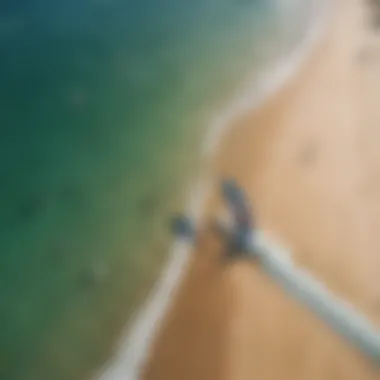
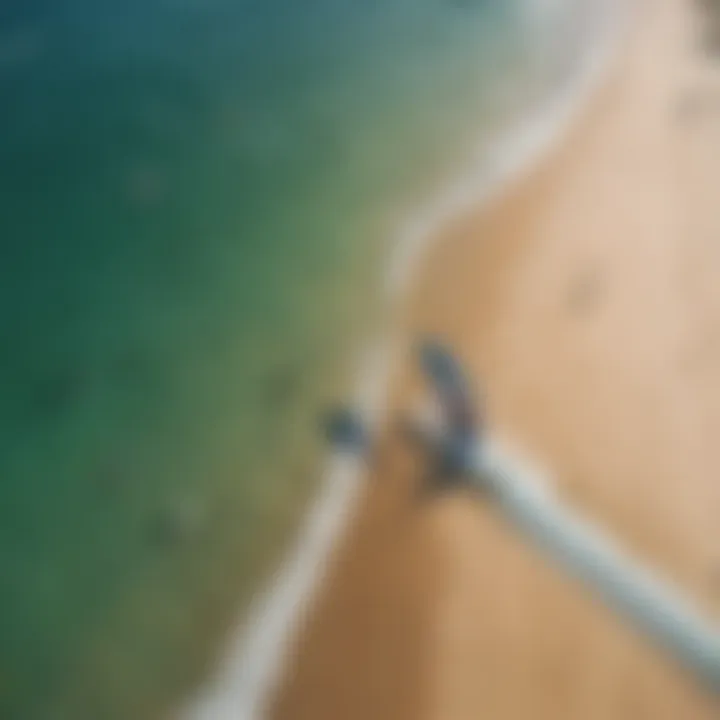
However, it’s worth noting that such events can sometimes be intimidating, especially for less experienced riders. The high level of skill on display can lead to a sense of exclusion for those not yet in the upper echelons of the sport. Nevertheless, these championships serve as an inspiration for all, igniting aspirations among aspiring kite surfers to improve their technique and possibly participate in the future.
Local Meetups
Local meetups form the backbone of the kite surfing community. These gatherings present an informal yet lively atmosphere where riders can exchange tips, share a laugh, and connect. The key characteristic of local meetups is their accessibility, meaning anyone can join, regardless of their skill level. This inclusiveness creates an environment that fosters learning and encourages participation.
A unique feature of these gatherings is the local knowledge shared. Experienced riders often provide insights about the best spots to kite surf in the area, as well as safety tips specific to certain locations. One potential disadvantage, however, is that the lack of structure can sometimes lead to inconsistent quality in skill-sharing, but the bonds formed often outweigh these drawbacks.
Festivals
Festivals dedicated to kite surfing are vivid spectacles, combining competition, music, and community celebration. These events typically draw large crowds, offering a chance for spectators to witness thrilling displays of talent while enjoying activities on the shore. One of the standout features of festivals is the variety of attractions, from live performances to workshops designed to engage attendees and promote kite surfing.
The benefit of such festivals is their ability to raise awareness about the sport and attract new enthusiasts, effectively expanding the kite surfing community. However, with so many activities occurring simultaneously, it can sometimes feel overwhelming for newcomers or those seeking focused learning opportunities.
Clubs and Organizations
Clubs and organizations provide a framework that strengthens and sustains the kite surfing community, offering support and resources for enthusiasts.
National Associations
National associations play a pivotal role in promoting kite surfing on a broader scale. These organizations serve as the governing bodies that standardize competitions and ensure fair practices. Their main characteristic is advocacy, pushing for inclusion, safety, and the evolution of the sport’s regulations.
One major advantage of these national bodies is their ability to facilitate talent development programs that nurture young riders. However, there can be a downside, as sometimes these associations face bureaucratic challenges, which might hinder quick adaptation to emerging trends within the sport.
Local Clubs
Local clubs are often the heart of kite surfing culture. They offer a sanctuary for enthusiasts to connect and develop their skills. The key feature of these clubs is their localized focus, helping members navigate specific conditions unique to their areas. This also provides a network that often leads to friendships and lasting connections.
A significant advantage of being part of a local club is the opportunity for more personalized guidance and mentoring that less formal associations cannot provide. On the flip side, they may have limited resources, meaning not everyone might get the same level of instruction.
Online Communities
Online communities have redefined how kite surfers connect, breaking geographical boundaries. These platforms serve as digital hubs where people share videos, discuss gear, and swap stories about their adventures. The agility and immediacy of these communities allows for real-time exchanges of information.
A key characteristic of online communities is their ability to provide support and feedback from a global audience. For those unable to find local groups or clubs, these resources can be invaluable. However, the downside is that information can vary in quality and reliability, so participants must verify what they learn before applying it in practice.
The kite surfing community, whether through local clubs or online interactions, offers invaluable support, enhancing both skills and friendships among riders.
Environmental Impact of Kite Surfing
Understanding the environmental impact of kite surfing is crucial in a world where outdoor activities often intersect with nature's delicate ecosystems. As kite surfing gains popularity across coastal regions, it raises important questions about sustainability and conservation that merit a closer look. This segment will shed light on the specific elements influencing kite surfing's environmental footprint, emphasizing the benefits as well as the considerations essential for both practitioners and enthusiasts. Ensuring this sport thrives without leaving a negative mark on nature is paramount.
Sustainability Practices
Sustainability in kite surfing goes beyond merely enjoying the wind and waves; it speaks to the responsibility that kite surfers have towards the environment. Implementing sustainable practices can vastly reduce environmental impact. Here are some critical practices that underline this commitment:
- Eco-Friendly Equipment: Many brands are now producing kites and boards made from recycled materials, which lessens waste during manufacturing. Consider looking for equipment certified by organizations that prioritize ecological standards.
- Responsible Site Selection: Choosing where to kite surf is important. Opting for lesser-known spots can help minimize overcrowding in prime areas that may be sensitive to human impact.
- Leave No Trace: Adopting the leave-no-trace philosophy means taking all trash home, being cautious of wildlife, and avoiding any damage to the surrounding environment.
By following these practices, kite surfers not only enjoy their sport but also contribute to preserving the beauty of the locations they cherish.
Conservation Efforts
Engaging in conservation initiatives is another way kite surfing advocates can make a difference. The collaboration with relevant organizations enhances the potential for impactful environmental efforts.
Collaborations with NGOs
Partnerships between kite surfers and environmental NGOs have become essential in addressing ecological concerns associated with the sport. One significant advantage of these collaborations is that they leverage the on-ground knowledge of local ecosystems with the expertise of environmentalists. For instance, groups like Surfrider Foundation actively engage surfers in coastal cleanup efforts. By joining forces, kite surfers can actively participate in:
- Beach Cleanups: NGOs often organize events where kite surfers can contribute to cleaning up beaches, which benefits both the environment and the kite surfing community.
- Awareness Programs: Informative sessions on the ecological consequences of certain practices can promote better habits among kite surfers.
These collaborations are not just beneficial; they embody a community-centric approach that emphasizes the value of shared responsibility toward nature.
Awareness Campaigns
Awareness campaigns are another avenue through which the kite surfing community can champion environmental sustainability. Such campaigns typically involve educating both practitioners and the public on the impacts of kite surfing.
- Community Workshops: Local clubs often host workshops aimed at raising awareness around environmental issues pertinent to kite surfing. These workshops can discuss best practices for minimizing impact during sessions.
- Social Media Initiatives: Platforms like Facebook and Reddit are leveraged to spread the message much faster. Simple posts highlighting the importance of caring for marine environments while enjoying water sports can reach a wide audience.
The unique feature of awareness campaigns lies in their ability to reach both novices and seasoned kite surfers alike. Educating newcomers not only prevents harmful habits but also creates a culture of respect towards both the sport and the environment. However, these campaigns must be approached thoughtfully: over-saturation of messages can lead to a diminishing interest.
The Future of Kite Surfing
The future of kite surfing holds exciting potentials and opportunities, continuously evolving as more enthusiasts join the sport. This section focuses on advancements in technology and emerging trends that significantly shape kite surfing's direction. Understanding these elements helps both newcomers and veterans navigate the sport more effectively. Furthermore, some benefits arise from improving gear and community engagement, making kite surfing more accessible and enjoyable for all.
Technological Advances
Gear Innovations
Gear innovations in kite surfing reflect a constant quest for enhancement, pushing limits of performance and safety. One standout gear innovation is the development of lighter, more durable materials. They are not only resilient but also promote better airflow, thus increasing the kite's stability. Advanced designs like the hybrid kite have gained popularity due to their versatility, catering to different wind conditions.
Unique features such as integrated safety systems are a hallmark of modern gear. For example, automatic depower mechanisms can prevent excessive pull, which is crucial during adverse weather. While these innovations offer many advantages, they also require a knowledgeable understanding from users to maximize their potential effectively.
Training Tools
Training tools have become essential for aspiring kite surfers, focusing on safe and intuitive learning processes. One of the key characteristics of these tools includes simulators and instructional videos that provide comprehensive guidance. These resources make learning engaging and demystify techniques that can be intimidating to newcomers.
A notable feature of certain training tools is their ability to replicate real kite dynamics on land. Such technology helps users develop their skills before they hit the water, enhancing confidence. However, one downside lies in their cost, which can be a barrier for some. Therefore, users should weigh the investment against their commitment to the sport.
Emerging Trends
New Techniques
With the progress of kite surfing, new techniques continue to emerge, pushing the sport into fresh and thrilling territories. A prominent trend is the increase in aerial tricks like kite loops or complex rotations. These techniques require a solid understanding of kite control and wind patterns, thus enhancing overall kite surfing proficiency.
The key characteristic of these new techniques is their emphasis on creativity and personal style. Many kite surfers are now focused on expressing individuality through their maneuvers. On the flip side, these challenging techniques can lead to higher risks if proper safety measures are not taken into account. Therefore, it’s vital for riders to build foundational skills before diving into more complex tricks.
Community Growth
An expanding community around kite surfing has become a prominent feature in its future. The rise of social media platforms has allowed for greater connectivity among kite surfers, enabling them to share experiences and advice. Additionally, local clubs and meetups foster relationships that enhance skill-sharing and camaraderie.
This growth contributes not only to the sport's popularity but also to a culture of support and mentorship. Being part of this thriving community can bring motivation and encouragement to seasoned surfers and newbies alike. Nonetheless, as more people join, ensuring responsible practices and respect for the environment remains critical to maintaining a healthy kite surfing ecosystem.
"The future of kite surfing promises innovations and community connections that enhance both performance and enjoyment of the sport."
As we gaze upon the horizon, it’s evident that kite surfing is on the brink of an exciting transformation. By embracing technological improvements and community solidarity, this sport is well-positioned for continued growth.















